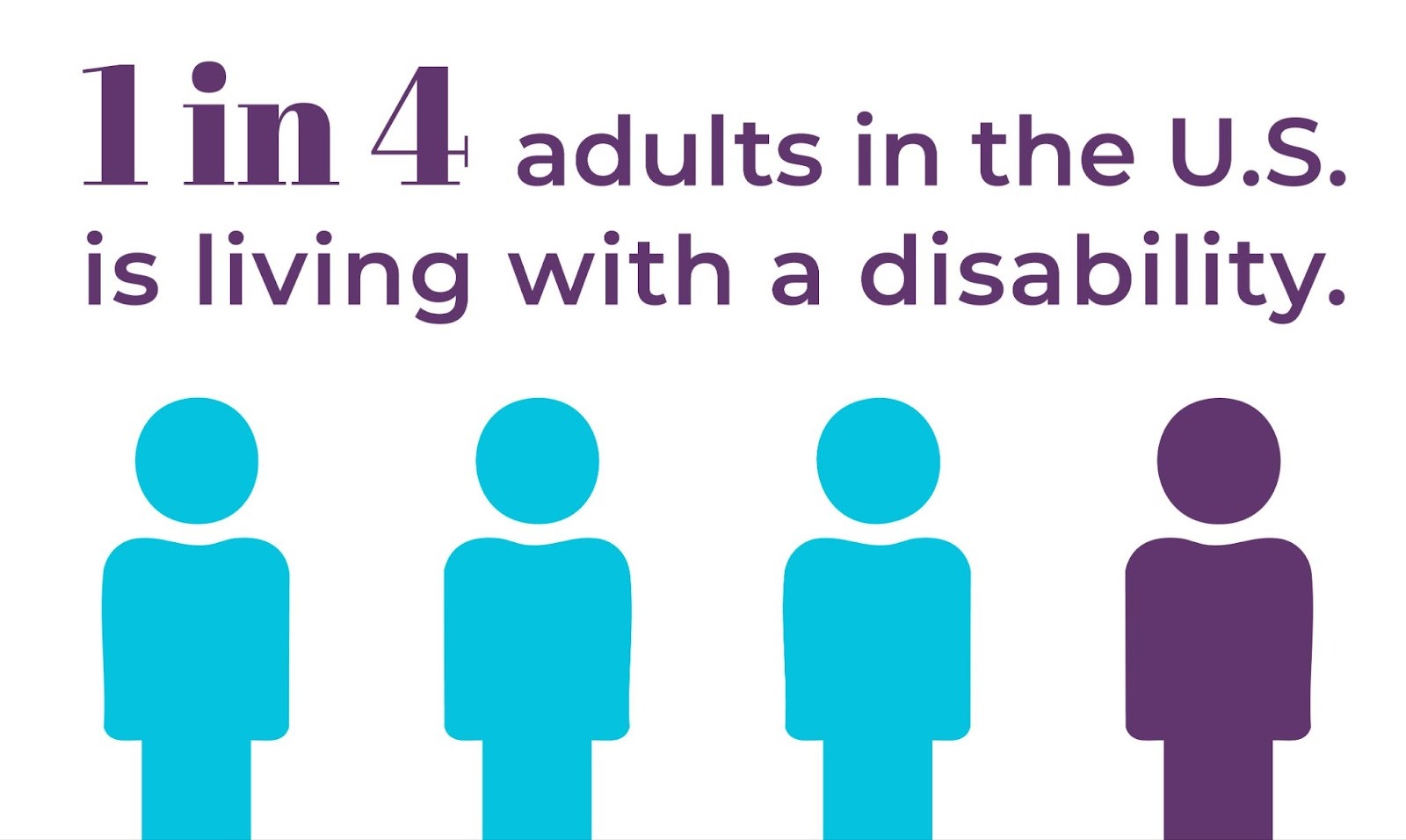A Case for Website Accessibility
Website accessibility is all about inclusion. It means creating websites that everyone can use. Whether someone relies on a screen reader, keyboard navigation, or has difficulty reading certain fonts or colors, accessibility ensures that digital experiences are open and usable for all.
In simple terms, it's designing and building websites so that people with vision, hearing, mobility, or other differences can navigate, read, and engage with content just as easily as anyone else. And while accessibility is rooted in inclusion, it's also just smart business. It improves the user experience for everyone, boosts SEO, and enhances your brand’s reputation.
Why Accessibility Matters
Imagine walking into a building with no ramps, confusing signage, or no elevator access. That’s how people with disabilities often experience websites that aren’t accessible.

According to the CDC, more than 1 in 4 adults in the U.S. lives with a disability. That’s a significant portion of your potential audience. Website accessibility isn’t just “nice to have,” it’s essential for inclusivity, legal compliance, and creating a better user experience for everyone.
When you make your website accessible, you're not only helping people with disabilities, you're improving usability for all users. Features like clean navigation, readable fonts, and captioned videos benefit everyone, not just those with specific needs.
The Business Case for Accessibility
Legal Requirements
There are legal reasons to prioritize accessibility. In the U.S., the Americans with Disabilities Act (ADA) requires public-facing websites to be accessible. Many lawsuits have been filed against companies with non-compliant websites, leading to costly settlements and damaged reputations.
International standards like the Web Content Accessibility Guidelines (WCAG) provide a preliminary framework for accessibility by outlining concerns and guidelines that can help address them. Following these guidelines demonstrate that you are taking precautions to ensure your website meets global best practices.
SEO and Performance Benefits
Accessible websites tend to rank better in search engines. Why? Because Google crawls websites similarly to how assistive technologies “read” them. Clean, semantic HTML, proper use of headings, alt text for images, and descriptive link text make your content more understandable to both users and search engines.
In other words: accessibility supports SEO. And that translates into broader reach, more traffic, and improved user engagement.
Wider Audience = Better ROI
When your site works well for everyone, more people can access your products, services, or information. That means a larger audience, better conversion rates, and improved customer loyalty.
Building a Compliant Website
While there are currently no universally enforced regulations for website accessibility compliance, adhering to established guidelines can help demonstrate your due diligence.
Common Accessibility Barriers
Many websites unknowingly create obstacles that make access difficult or impossible for users with disabilities. Some of the most common issues include:
- Missing alt text on images (screen readers rely on these to describe visuals)
- Unusable forms
- Poor navigation for keyboard or screen reader users
- Auto-playing media without pause or mute controls
- Videos without closed captions
- Low contrast text or overly complex typography
- Poor content structure (random or missing headings)
Designing for Accessibility
Ensure that your web agency creates an accessible design by paying attention to:
- Color contrast: Ensure text stands out from the background.
- Typography: Use readable fonts and sufficient size.
- Hierarchy: Organize content clearly with headings and subheadings.
Use semantic HTML to structure your content correctly—H1 for main titles, H2 for section headings, and so on. Forms and interactive elements should be easily navigable with a keyboard and understandable to assistive tools.
Integrate Accessibility Into Your Workflow
Don’t treat accessibility as an afterthought. Bake it into your design and development process from the beginning. Automated tools like accessiBe can make maintaining accessibility simpler. These tools scan your website, apply fixes in real time, and offer monthly audit reports to track compliance.
AccessiBe, for example, adds a small accessibility widget to your site, allowing users to adjust things like contrast, font size, and navigation preferences. While automated tools aren’t a complete substitute for manual testing and thoughtful design, they’re a helpful layer of support.
Remember: accessibility is not a one-time task. As your website grows and changes, so should your accessibility efforts.
Accessibility Is Good for Everyone
Website accessibility is about making the internet a place where everyone feels welcome and capable. It’s about doing what’s right, but it’s also smart business.
From legal protections to SEO to user satisfaction, the benefits of accessible design are clear. Whether you're updating an old site or building something new, prioritize accessibility from the start. Let’s create digital spaces where everyone belongs.
Ready to make your website accessible? Let’s start the conversation.
About Pyper, Inc.
Established in 2012, Pyper, Inc. is a woman-owned, integrated marketing agency located in St. Petersburg, FL. We deliver strategy, branding, and 360° marketing solutions to accelerate clients’ growth and avow that every brand deserves the chance to be amazing regardless of the complexity of its market, industry, or budget.
